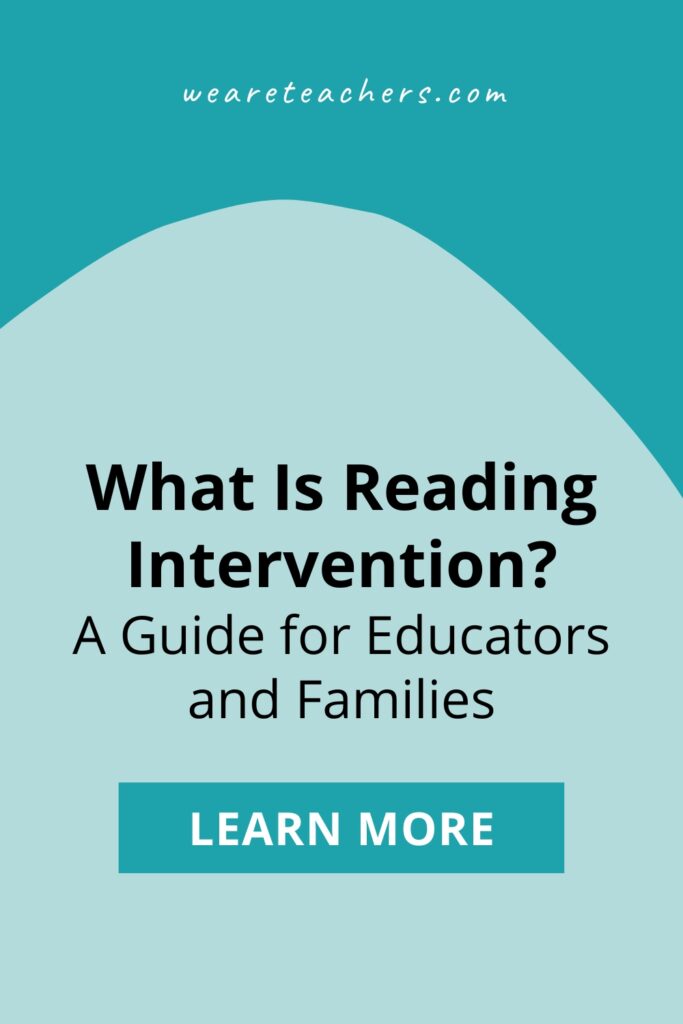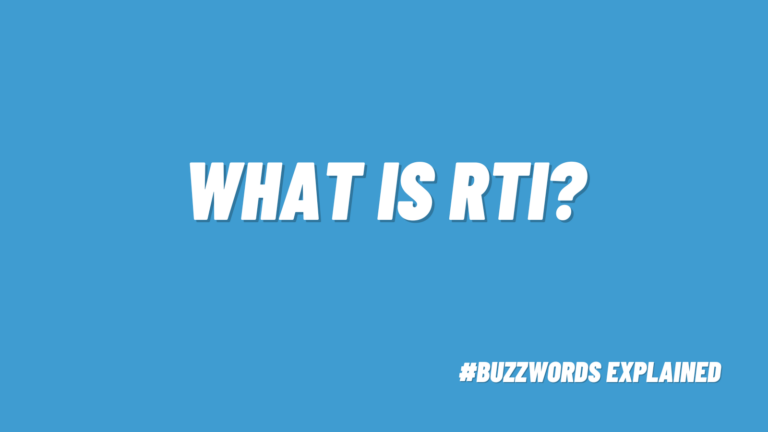Reading intervention is extra support and instruction for students who are struggling to learn to read. Teachers intervene to reteach and provide instruction that strengthens students’ skills. There are some common pathways and progressions, but intervention should look different for every student. For example, a student who struggles to learn letter sounds will be provided with a phonics intervention. On the other hand, a student who struggles with comprehension won’t need phonics but will need extra instruction in strategies that help them understand what they read.
Reading intervention is often part of a school’s (federally mandated) Response to Intervention (RTI) or Multi-Tiered System of Support (MTSS) process, meaning schools will provide reading intervention to students who need additional support to become proficient readers.
What are the five parts of reading?
Before getting into reading intervention, it’s important to know the main skills that reading intervention targets.
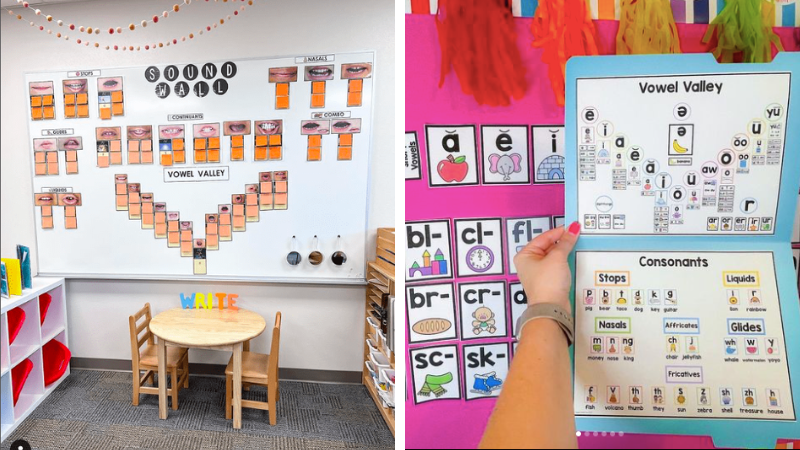
There are five core aspects of reading. Students can excel or struggle with any of the five, or a combination.
Learn more: How To Set Up a Sound Wall
Phonemic Awareness
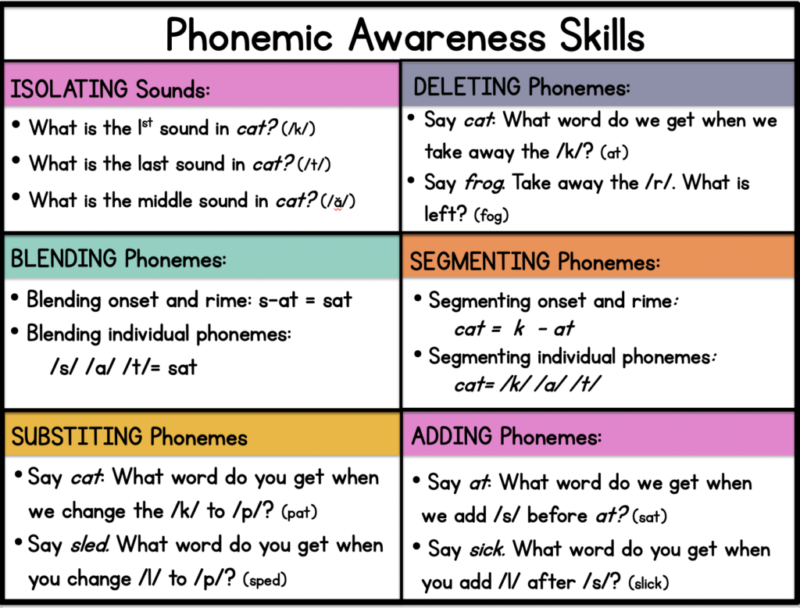
Image: Sarah’s Teaching Snippets
Phonemic awareness, a subcategory of phonological awareness, is hearing the individual sounds in words. Students with strong phonemic awareness are able to separate words into sounds and hear and create rhyming words.
Learn more: Phonological Awareness Activities
Phonics
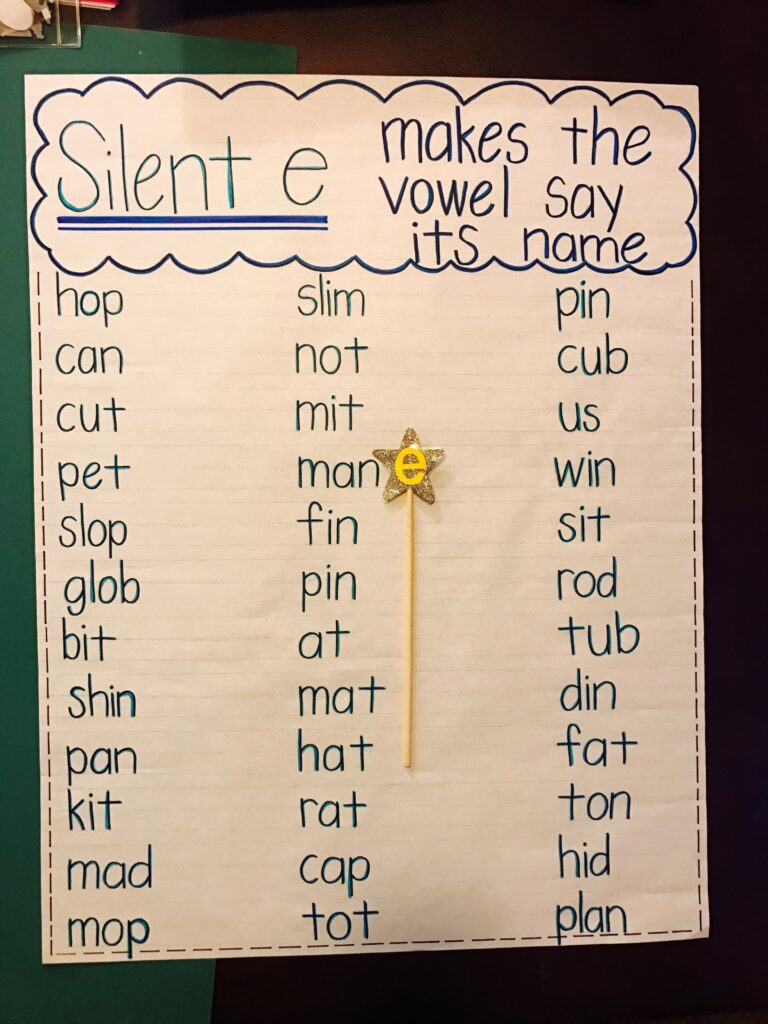
Image: A Teachable Teacher
Phonics is recognizing letters and the sounds they make. There are 44 sounds in the English alphabet, represented by 26 letters and letter combinations. This includes the letters of the alphabet as well as letter combinations, like /ai/, /oa/, /ch/, and more.
Learn more: Phonics Activities
Fluency
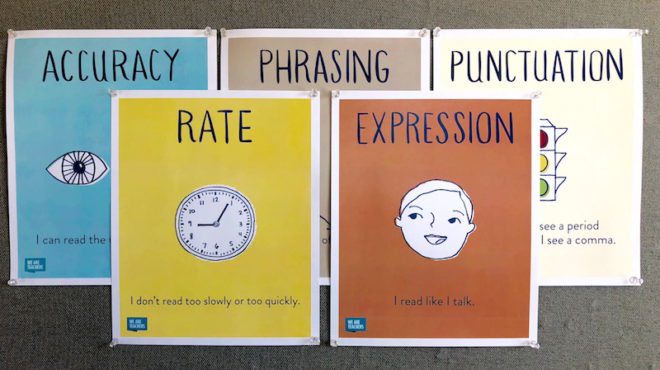
Fluency is the ability to read with accuracy, appropriate pace, and expression. Students who read fluently generally sound like they are talking as they read (not reading like a robot), and add expression for punctuation.
Get it: Reading Fluency Posters and Fluency Activities
Vocabulary
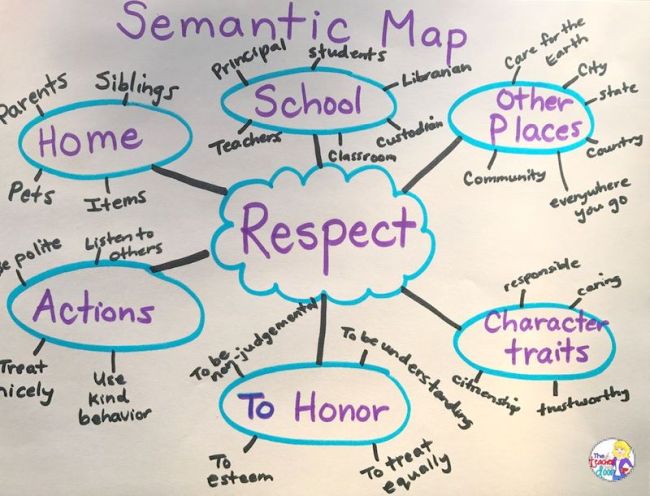
Vocabulary is a child’s knowledge of individual words and how to use those words in context. Kids pick up their vocabulary from being spoken and read to and through vocabulary instruction.
Learn more: Vocabulary Activities
Comprehension
Comprehension is a child’s ability to understand what they read. It’s the ultimate goal of reading. Readers who are comprehending what they read can visualize a story, anticipate what’s going to happen next, laugh at jokes, and make inferences about what the author is telling them. You’ll see a child’s comprehension in how well they can tell you what they read, and how well they answer questions about the aspects of a story or text.
Learn more: Reading Comprehension Activities
OK, so what is reading intervention?
Reading intervention involves intensive or targeted instruction on reading skills to accelerate the reading skills of students who are reading below grade level. Intervention is provided in addition to core instruction, so students receive the general lessons and additional intervention. This is provided within Tier 2 or 3 of RTI or MTSS. Reading intervention can be delivered in class, such as when a teacher pulls a small group of students during the reading block to work on vocabulary. Or it could be outside of class—for example, when a reading interventionist pulls a group of students to work through a phonics intervention.
Here is a summary of what should be included in reading intervention for grades K-2:
How do we know which students need reading intervention?
Not every child will need reading intervention, and not every child who needs it will need it for the same amount of time. The first thing that a school team will do is figure out which students need intervention. To do this, teachers will:
- Give a universal screener, an assessment that gives information about where students are working on a progression of reading skills. This is done three times each year. These are often standardized, like the NWEA/MAP assessment or the iReady assessment.
- Students who are not making progress according to the universal screener will be given additional (diagnostic) assessments to determine where they are struggling.
- Then, teachers will identify skills that need to be retaught. The idea is to intervene and reteach skills from the most basic to most complex. So, a student who has concerns in both phonics and fluency would start with a phonics intervention because that is the more basic skill.
Watch a reading expert talk through how she figures out what struggling readers need:
How do we know a student is making progress in reading intervention?
Once students are receiving intervention, teachers will use data to monitor progress and adjust intervention as needed:
- Formative assessments give information for teachers to adjust teaching. These are often given as part of the intervention curriculum, or they are teacher-created, like a word list that students read.
- Diagnostic assessments provide information about what students can and can’t do yet. A student will be given a diagnostic assessment after the intervention is complete to see how they progressed.
So, a student may take a universal screener in the fall. Based on that universal screener, teachers see that the student is reading below grade level. They give a diagnostic assessment and determine that the student has deficits in phonics knowledge. Then, they provide intervention and formative assessments along the way to monitor how the child is progressing. Teachers will look for progress that is helping the student move quickly through reading skills. The goal is for students to regain missed skills as quickly as possible.
What programs are effective for reading intervention?
Reading interventions should be evidence-based, or have research to support that they work to produce change in student knowledge and achievement. You can find evidence-based programs by searching websites like:
- What Works Clearinghouse from the Institute of Education Sciences provides overviews of the research behind various curriculum and programs.
- The Best Evidence Encyclopedia has overviews of programs in downloadable reports.
- Intervention Central has reviews and comparisons of intervention strategies.
Here are some reading intervention programs to consider:
Phonemic Awareness
Heggerty
Heggerty phonemic awareness practice provides practice and reinforcement in breaking words apart into syllables and phonemes.
Buy it: Heggerty Curriculum
Phonics
Sound Partners
Sound Partners is a phonics-based intervention that teaches letter sounds in a systematic way, giving students practice in reading words and eventually sentence reading. It progresses from individual letters through multisyllabic words.
Buy it: Sound Partners at Voyager Sopris
Orton-Gillingham
Orton-Gillingham is an approach to teaching phonics that is direct, explicit, and multisensory. It is typically delivered one-on-one and teaches reading and writing. Teachers must be taught how to deliver Orton-Gillingham.
Learn more: All About Learning Press
Learn more about Orton-Gillingham Certification.
Fundations
Fundations (Wilson Language Training) is an explicit, structured approach to teaching reading foundations. While Wilson Reading System is for Tier 3 intervention, Fundations is for Tier 2.
Buy it: Fundations at Wilson Language Training
Fluency
HELPS
HELPS (Helping Early Literacy with Practice Strategies) is a fluency intervention that involves working with students to read and reread passages with feedback. The combination of extra practice and clear, consistent feedback helps students improve fluency.
Learn more: HELPS Education Fund
Which reading intervention strategies are effective?
Teachers may use a program, or they may use strategies to teach key skills.
Phonemic Awareness and Phonics
The first skill students learn is hearing and identifying letter sounds. Watch a literacy specialist explain how to teach letter sounds:
Once students know letter sounds, they can start blending. Watch a teacher explain how to blend sounds into words:
Fluency
Students who struggle with fluency may need support in phonics to master all the letter-sound patterns. They also may need lots of additional practice with reading aloud and getting feedback on how they are reading.
Watch how a reading specialist explains fluency intervention in K-2:
Some additional ways to build fluency when it’s all about practice, practice, practice:
- Guided oral reading: Have students read aloud to you while you stop and give them feedback on how they sounded out a particular word or how well they stopped or slowed down for punctuation.
- Repeated reading: Give students a passage at their reading level and have them practice reading it multiple times. Students can track how long it takes them to read the passage, or circle how many errors they make each time they read. The idea here is to show students that they are improving each time they read, not that they have to be perfect.
- Partner reading: Pair students with strong fluency with students who are working on their fluency. Give each student a passage that they are comfortable with and have them read to each other.
- Prosody: Teaching students what prosody sounds like, including intonation, volume, smoothness, phrasing, and expression, can help students that don’t pick up on expression intrinsically.
Read more: Fluency practice ideas.
Vocabulary
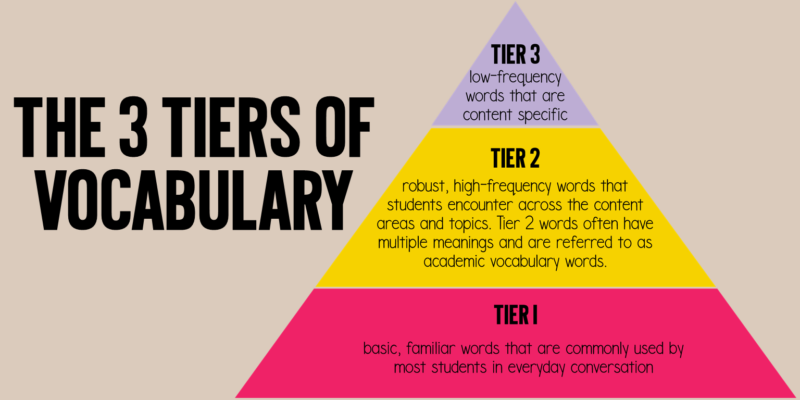
Students need to know the meaning of words they read. Students build vocabulary through a combination of learning and using language, and explicit instruction in word meanings. There are some key strategies for vocabulary:
- Preteach words: Teach words that students will see in what they’re going to read so that students know what’s coming and can see the words in multiple contexts. The more a student experiences a word, the better they will be at using it themselves.
- Teach academic vocabulary: Tier 3 words, or words that you only use for certain academic topics (think: hypotenuse, submersible, pumice) should be taught as well. Some students may need extra practice with these words to make them stick.
- Help students connect known vocabulary to new vocabulary: As students develop their vocabulary, provide them with texts that have a common vocabulary. A bunch of books about the Renaissance, for example. Seeing the vocabulary in different texts helps students learn all the words.
- Build morphological awareness: Teach prefixes, suffixes, and base words to help students pull apart and define words that follow traditional patterns. And help students know when a word does not follow a pattern so they don’t waste time trying to make it make sense.
Learn more: Miss Decarbo
Watch this teacher explain how to build language and vocabulary in grades K-2:
Comprehension
The ultimate goal of reading is to understand, and enjoy, stories and information. Students must understand what is literally written down, and make inferences and think about what they’re reading. Students may receive intervention in comprehension exclusively, or in addition to work on phonics and fluency.
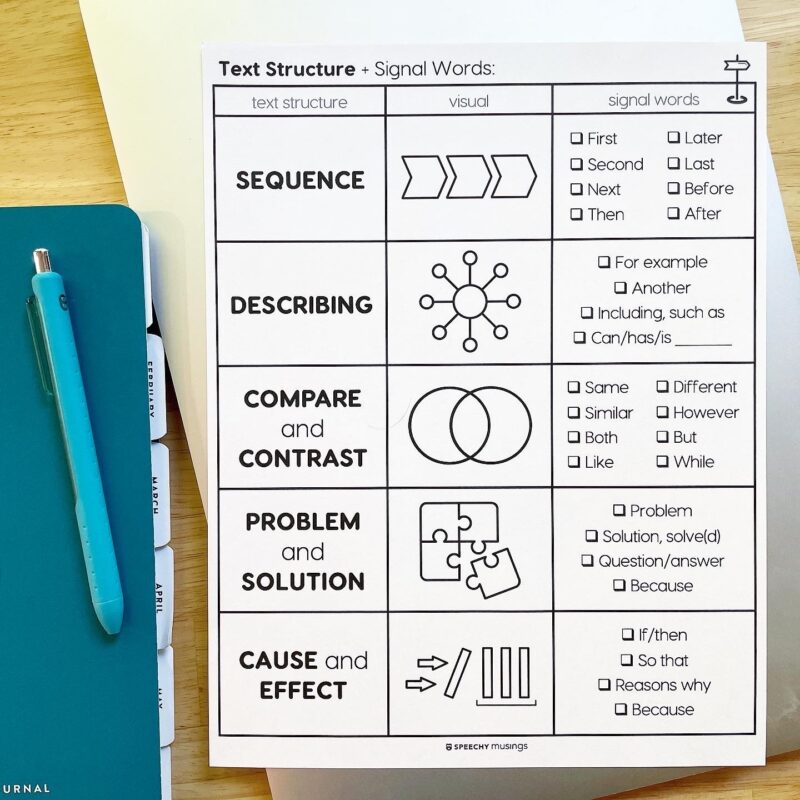
Image: Speechy Musings
Some strategies for comprehension:
- Build background knowledge: Often, students lack knowledge to connect to text, which inhibits comprehension. Help students build background knowledge by activating prior knowledge—have them think about what they know about a topic and connect their knowledge to the text.
- Read widely: Have students read multiple texts on the same topic. Point out where they used background knowledge to connect and build new knowledge as they read from text to text.
- Text structure: Teach students the various text structures and how to use each to understand what the author is presenting. When students identify the structure, they can anticipate the type of information that the author is presenting to them.
- Paragraph shrinking: To reinforce summarizing, have students stop after each paragraph or section and write a summary in 10 words or less. Thinking through the shortest summary helps students recognize the most important ideas.
- Discussion: Engage students in literature discussions that allow you to model your thinking about text, and give students a chance to answer and discuss questions. Small group discussions also let you hear more of students’ thinking.
Read more about reading interventions from Reading Rockets.
What are reading interventions and strategies for home?
Helping struggling readers at home is different than at school. If your child is in school all day, they probably don’t want more teaching when they get home. If that’s the case, focus on reading aloud to them and using active reading techniques of asking questions, talking about vocabulary, and making connections as you read.
Read Raising an Active Reader by Samantha Cleaver
Buy it: Read With Me and Raising an Active Reader at Amazon
Read Teach Your Child to Read in 100 Easy Lessons by Siegfried Engelman
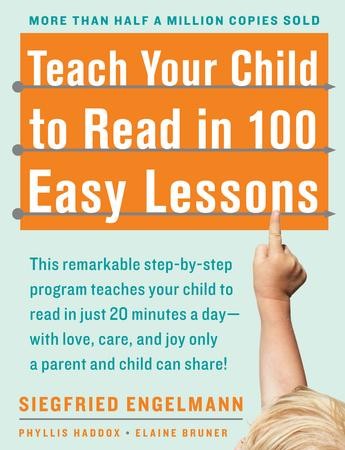
If your child is up for intervention at home, check out Teach Your Child to Read in 100 Easy Lessons by Siegfried Engelmann. It leads you through a series of lessons that cover all the phonics and syllable knowledge your child will need to read.
Buy it: Teach Your Child to Read in 100 Easy Lessons at Amazon
Watch Tips To Help Struggling Readers
Is reading intervention special education?
In short, no. But reading intervention is provided to students that a school thinks may have a learning disability. And based on the data collected during the intervention, if the student is found eligible for special education services, then the reading intervention may continue as part of the child’s Individualized Education Plan (IEP).
Learn more: What Is Special Education?
What are your favorite ways to help struggling readers? Share in the WeAreTeachers HELPLINE group on Facebook.
Plus, check out why ALL reading counts.
